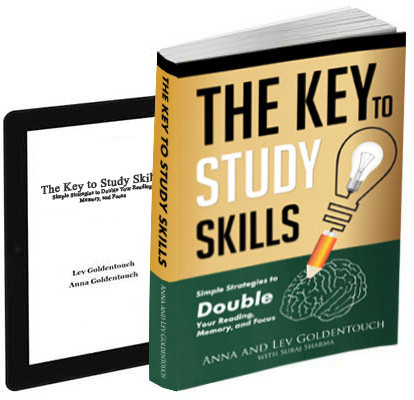To learn something effectively and meaningfully, we must learn to regulate the cognitive and emotional processes involved in it. As we well know, the human being is multidimensional, with the capacity to constantly learn. Therefore, it is very important to consider these factors and teach students the relevance of self-regulated learning. We review below how to achieve better learning management.
What is self-regulated learning?
We talk about self-regulated learning when the student is able to manage the cognitive and emotional processes that are involved in learning, deliberately. That is, the student is able to select those strategies that are beneficial when learning, regulating their emotions and performance to achieve their goals.
Added to this, it could not be more true that “the ability to self-regulate learning could be an even greater predictor of academic success than intelligence.
Why is self-regulation important for learning?
Self-regulation is the cornerstone of effective learning, fostering autonomy and resilience in individuals. It empowers learners to manage distractions, set goals, and adapt to challenges. Through self-regulation, one cultivates focus, enhancing information retention and comprehension. It encourages metacognition, enabling individuals to reflect on their learning process and adjust strategies accordingly.
Self-regulated learners exhibit greater perseverance, overcoming setbacks with a growth mindset. They develop a sense of responsibility, taking ownership of their learning journey. This skill transcends academia, translating into improved problem-solving abilities and heightened emotional intelligence. Ultimately, self-regulation nurtures lifelong learning, equipping individuals with the tools to navigate complexities in various facets of life.
Characteristics of students who self-regulate their learning
The various studies have highlighted some characteristics of the students that regulate learning. Below, we mention some;
- They know, identify and use cognitive strategies that allow them to understand, process, organise, prepare and retrieve information.
- They develop metacognitive skills to know how to plan the work they are going to do. That is, they direct the various mental processes necessary to achieve the stated goal.
- They develop, modify and control those emotions that are positive for learning. Generally, linked to the motivational aspect of the task. For example, enthusiasm, taste and satisfaction, among others.
- They properly plan the task. That is, they anticipate the execution time, consider a favourable environment for learning (place) and come to the aid of their teachers or classmates when they need it.
- They support an appropriate motivational classroom climate. They get involved in tasks, planning and organisation.
- They strive to maintain attention on the task, avoiding distracting stimuli.
- In other words, these students are aware of the importance of taking an active role in their learning.
Consequently, they will adjust their cognitive and emotional processes to function properly. That is, to be able to respond to the task, achieve the goals set and have a positive performance.
The Cycle of Self-Regulated Learning
Self-regulated learning (SRL) is a cyclical process that empowers individuals to take control of their learning journey. It involves a series of phases where learners actively plan, monitor, and evaluate their own learning. This cycle is a fundamental framework for effective learning and skill development.
Planning
- Setting Goals: Initiating the cycle involves establishing clear, achievable learning objectives. These goals provide direction and purpose, guiding the learner’s focus.
- Strategy Selection: Individuals identify and select suitable learning strategies based on their goals and preferences. This step involves choosing methods and resources conducive to learning.
Monitoring
- Task Engagement: Actively engaging in the learning process allows learners to stay focused on their goals, maintain attention, and adapt strategies as needed.
- Metacognition: Self-awareness plays a crucial role here. Monitoring involves reflecting on one’s learning strategies, understanding their effectiveness, and making adjustments accordingly.
Control
- Adaptation: Flexibility is key. Learners adapt their strategies and approaches based on feedback and their evolving understanding of the subject matter.
- Persistence: Overcoming obstacles and maintaining motivation are vital elements of this phase. Persistence involves staying committed to the learning process despite challenges.
Reflection
- Evaluation: Reflecting on the learning experience helps individuals assess their progress toward their goals. It involves analyzing strengths, weaknesses, and areas for improvement.
- Self-Regulation: Using evaluation outcomes, learners regulate their future learning behaviors. This step closes the cycle by informing subsequent planning and strategies.
How to teach self-regulated learning?
Now that we have addressed the importance and, above all, the usefulness of our students learning to self-regulate their learning, a question arises: how to teach self-regulated learning?
Well, the design and planning of strategies have been based on the fact that self-regulated learning is a skill that is acquired and developed through processes and activities throughout the various learning experiences.
- Teach metacognition, cognitive and behavioural skills.
- Develop conditional knowledge that is useful to determine which strategies are most effective and when they are necessary to apply.
- Motivate students to use the identified strategies to achieve the proposed goals.
It is about explaining to students what strategies are the most appropriate so that they can better process and control learning (declarative knowledge).
Subsequently, they will be taught how to use these strategies (procedural knowledge) and, consequently, when to use them (conditional knowledge).
Following this line, the teacher must also indicate what benefits they entail. On the other hand, we should not neglect the emotional elements that underlie the cognitive processes mentioned above.
Therefore, it is important to improve those motivational beliefs, self-efficacy or expectations that our students may present. That is, we should not neglect how motivation influences this process.
Didactic models to teach self-regulated learning
The basis of these teaching models that seek to promote self-regulated learning is based on providing systematic support that allows students to work independently.
This is why it is recommended to integrate learning strategies into class activities in a curricular manner. Below, we mention some of them.
Self-observation
Students must learn to assess and monitor whether the strategies they are using are effective. If not, be able to modify, change or readjust what is necessary. This implies an awareness of your cognitive processes regarding your emotional state, motivation, task time and level of effort.
For example, be aware that they are not understanding the instruction, analyse their level of understanding of the task and verify that they are willing to learn, among others. That is, verify that their metacognitive skills are beneficial for the task.
Modelling
Human beings are capable of acquiring behaviors, attitudes and skills through imitation.
In this case, teachers will be a reference model who, if they openly explain what they do to solve a task, implicitly teach the strategies they are using.
Consequently, the student will better assimilate, through a practical example, how to plan, execute, supervise and solve a task.
This type of model is usually given at the beginning of learning, but ideally, the more visualisations and examples you have, the better the mastery will be in the future.
Guided and autonomous practice
To conduct the learning process effectively it is important to practice self-regulation strategies. At first, in a guided way and, little by little, independently.
Feedback is an important aspect for the analysis of said effectiveness. Likewise, what is intended through this model is to promote responsibility in the student so that they can control, develop, apply and evaluate the strategies that they have acquired as a result of guided practice. An example of this strategy put into practice is the flipped classroom.
Social support
In principle, students are provided with support or also called “scaffolding” to guide their learning process.
With the passage of time, this support is gradually withdrawn, converting this support that, in principle, was directive, into something less intense. That is, this scaffolding will be gradually removed so that the student begins to direct their learning processes.
Self-reflective practice
This would be the last part of the self-regulation process, as it is the step in which students practise everything they have learned independently.
In this sense, they are expected to be able to reflect on their learning process, use appropriate strategies and adjust them to the context in which they find themselves. Consequently, all of this will promote a positive learning environment.
Conclusion
In summary, to achieve better learning management it is important to teach and guide students to regulate their experience. The better the management of the elements that influence this process, the better the result and general performance.
In other words, the more active their participation, the better their willingness to learn and engage with what they learn. Thus, your response will be much more positive to achieve the proposed goals.

Get 4 Free Sample Chapters of the Key To Study Book
Get access to advanced training, and a selection of free apps to train your reading speed and visual memory

